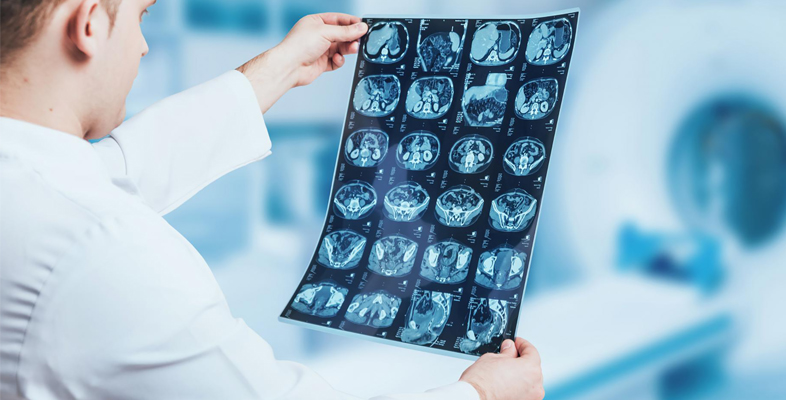4.1 Brief historical background
Gold has been valued for centuries, as far back as the time of the ancient Egyptians – not only as a precious metal, but also for its healing powers. In more recent times, gold complexes have been used to treat patients with rheumatoid arthritis, a debilitating and painful inflammatory condition where the cartilage between bone joints is lost over time.
Mercury, in the form of its salt mercury(I) chloride, was traditionally used in the 16th century throughout Europe as a diuretic and laxative, and was also used to treat syphilis, often effectively poisoning the patient. And, by the 19th century, HgCl was incorporated in a tonic known as ‘blue mass’ and prescribed for many ailments including such diverse conditions as constipation, toothache and depression. The use of mercury compounds is now largely avoided because of their poisonous properties, but they are still to be found in traditional therapies such as Chinese medicines.
The semimetal (or metalloid) arsenic, perhaps most well known as a poison, has also been used in medicine. It was prescribed for a range of ailments, such as rheumatism, malaria, tuberculosis and diabetes. In the 18th century, ‘Dr Fowler’s solution’ – a mixture of potassium arsenite and lavender water – was prescribed as a general tonic and an aphrodisiac.
It was not until the 20th century, however, that metal complexes began to be screened more systematically for their medicinal properties. In 1909, the organoarsenic compound Salvarsan became the first modern chemotherapeutic agent for the treatment of syphilis, although it was later superseded by antibiotics.
The discovery of Salvarsan is described in the following video – watch this now.

Transcript: Video 5 The discovery of Salvarsan. (5:40 min)
[MUSIC PLAYING]
MICHAEL MOSLEY: At the start of the 20th century, diseases you might have associated with medieval times were still rampant syphilis, for example. Now, for centuries, doctors had used mercury to treat it but, being extremely toxic, it tended to kill the patients.
So when, in this Frankfurt mansion, a scientist called Paul Ehrlich set out to find a safe and effective drug against syphilis, it was a major challenge. Fortunately, he was a real obsessive.
DR WALTER SNEADER: Paul Ehrlich studied medicine in the early 1870s. But he spent an awful lot of time in the laboratory rather than in a clinic where he should have been.
MICHAEL (VOICEOVER): One of the things Ehrlich was doing was playing around with artificial dyes. The first had been discovered in 1856, and soon, people went dye crazy.
MICHAEL: His favourite colour was methylene blue. And with this, he made a remarkable discovery, one which would set him on the path to medical greatness.
DR DRUIN BURCH: Ehrlich was wonderful in showing how you could use dyes to illuminate the hidden world, the world which, even down a microscope, you wouldn’t be able to see unless you coloured it with these dyes that showed physical processes.
DR SNEADER: He spent wasted, whichever way you want to look at it a lot of time playing around dyeing regions of biological tissue.
MICHAEL (VOICEOVER): When Ehrlich added a drop of methylene blue to tissue infected with bacteria, he noticed something astonishing. Only the bacteria were stained by the dye, not the tissue around them.
DR BURCH: Often, what was needed to discover these bugs was the right stain. Get the right stain, and in amazing colours these bugs would appear before your very eyes.
MICHAEL: Now, the fact that an artificial dye will selectively stain bacteria was remarkable. But it’s what Ehrlich thought next that was truly revolutionary.
DR BURCH: What he did was he noted that some compounds were toxic. And he said, what if you create selective toxicity so that you can give somebody a compound that will kill off what’s making them unwell and leave them unharmed? And he famously coined a phrase from a German folk story, you could create these ‘magic bullets’, and which is what we’ve been trying to do ever since.
MICHAEL (VOICEOVER): Now many people thought Ehrlich was wasting his time. But he was convinced that magic bullets existed, and he would discover them. Initially, he tried finding a cure for sleeping sickness. But with the help of his Japanese assistant, Sahachiro Hata, he switched his attention to a pathogen that was rather more common in Germany. Common but horribly disfiguring syphilis.
MICHAEL: The end stage of syphilis was pitiable paralysis, insanity, and then death. There were no cures, and the only treatment mercury made your hair and teeth fall out before eventually destroying your entire nervous system.
(VOICEOVER): Ehrlich hoped to find a magic bullet that would be more selective, poisoning the bacteria but not the rest of the body.
MICHAEL: Ehrlich thought that arsenic might be effective against syphilis. Arsenic is notoriously poisonous. But by this point, German chemists had made hundreds of different compounds of arsenic. So Ehrlich asked his assistant Hata to work his way systematically through them, hoping that amongst them would be one that was safe and effective.
MICHAEL (VOICEOVER): Hata had found a way to infect rabbits with syphilis. He now set about the unenviable task of testing arsenic compounds on them one after the other. Some compounds killed both bacteria and rabbit. Some killed neither. Hata went through hundreds and hundreds of compounds until finally he found one that was rather special.
MICHAEL: Compound 606. It killed the bacteria but, best of all, it left the dear old rabbit intact. This was the magic bullet they had been hoping for.
DR BURCH: Salvarsan 606 showed that Ehrlich was right, that these things were out there. All you had to do was methodically screen for them, and you would find them. It showed the power of methodically screening lots of compounds 606 606 compounds to see what worked.
MICHAEL: I do think it’s wonderful that it was in this building, a hundred years ago, through a combination of luck, logic, and sheer hard work, that they eventually found a cure for syphilis, a disease that had destroyed the lives of countless millions.
DR SNEADER: The newspapers at the time carried it on the front pages. The medical profession were stunned.
DR BURCH: To be able to treat syphilis was miraculous, absolutely miraculous.
[MUSIC PLAYING]
-
What experimental strategy was adopted by Paul Ehrlich (1854–1915) in his search for a cure for syphilis?
-
Ehrlich, or more precisely his assistant, Sahachiro Hata (1873–1938), painstakingly tested hundreds of organic arsenic compounds on rabbits which had been purposely infected with syphilis. Compound 606 was the one that worked – curing the disease, but not poisoning the animal – this was Salvarsan.
Salvarsan and indeed salts of another toxic heavy metal antimony have been used in the treatment of tropical diseases. However, probably the most famous metal-containing complex found in the 20th century was the platinum-containing anticancer drug cisplatin.
Its anticancer activity was discovered serendipitously by Barnett Rosenberg (1926–2009) in the 1960s and it went on to revolutionise the treatment of some cancers, notably testicular cancer. Intensive research in this area has since spawned the development of other metal complexes for cancer therapy. In addition, the 20th century also saw a growth in the use of radioactive metals to treat certain types of cancers, such as bone cancer.
Although some of the examples above are rather extreme, this snapshot does serve to make the point that metal-based drugs are generally speaking toxic, and a medical strategy must be in place to carefully control their dose to bring out their health benefits and/or therapeutic activity.
You will learn about the hits, misses and current developments of metal-based drugs throughout the next sections. But first, the next section provides an overview of the current use of metals not just in medicine but also in health care in general.
